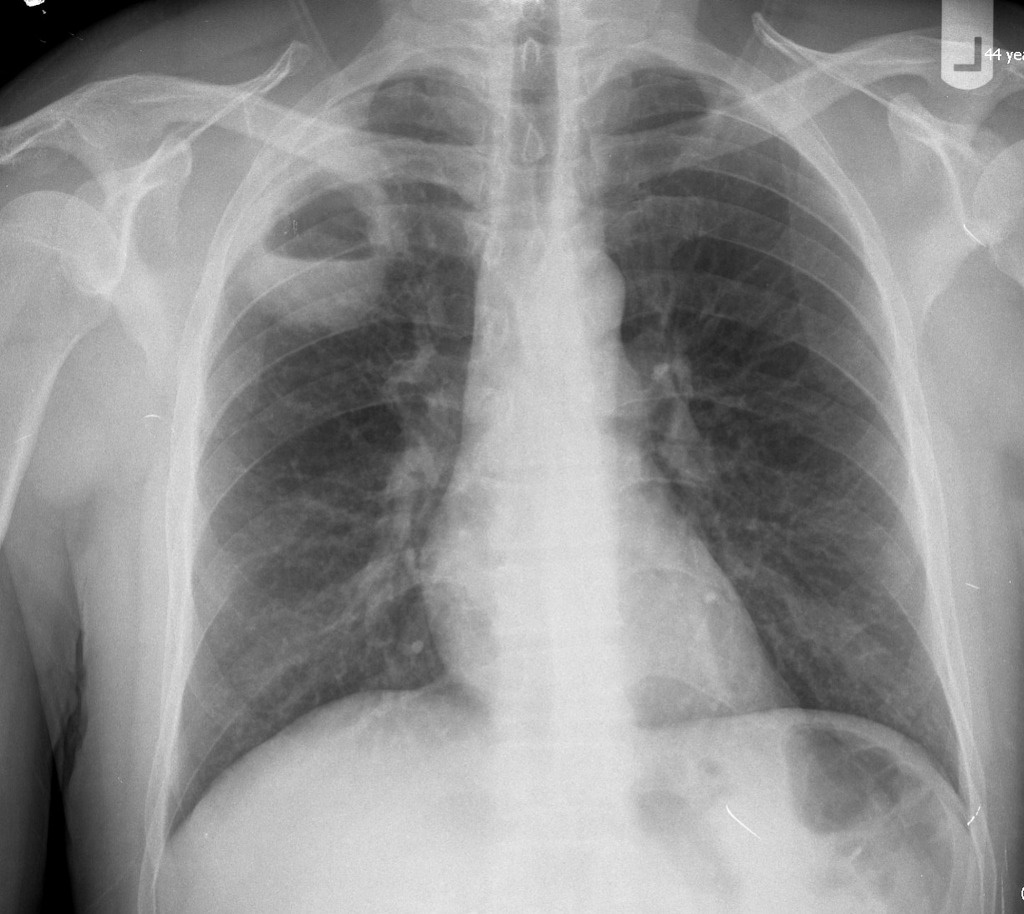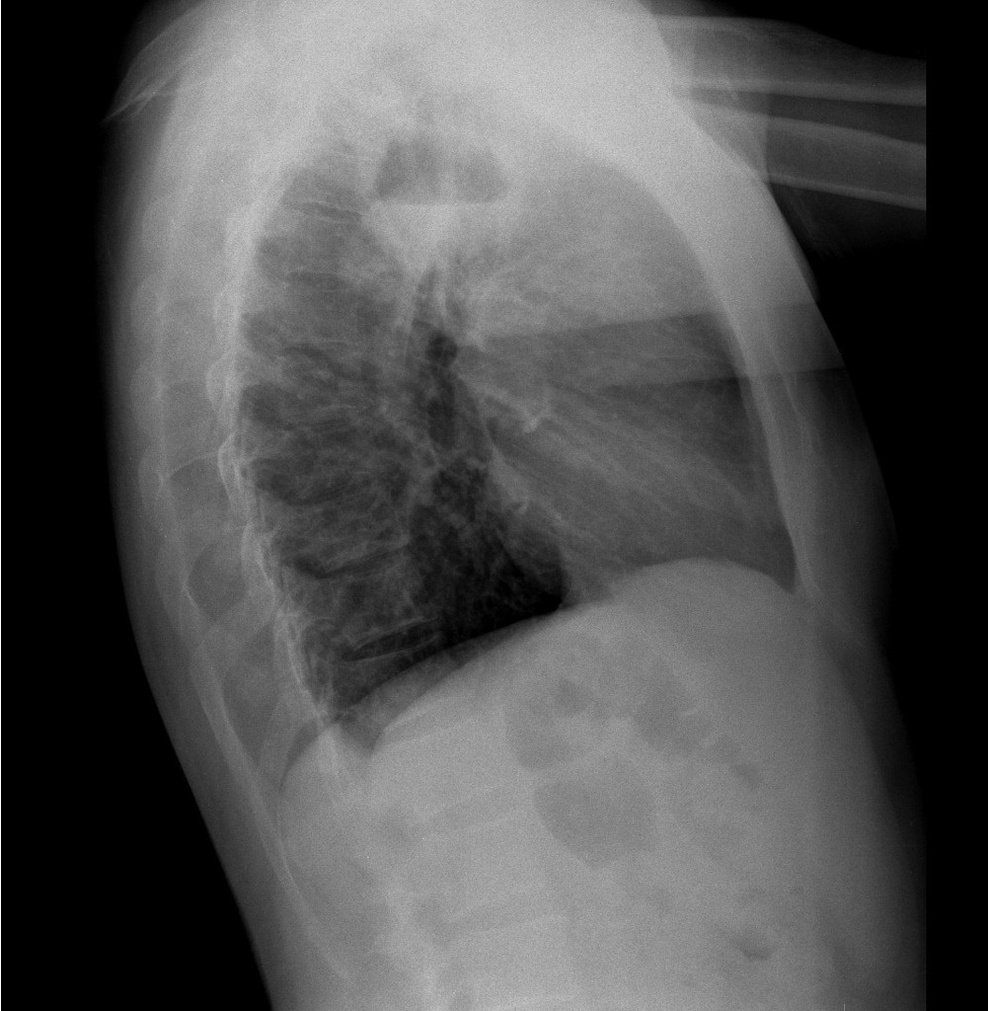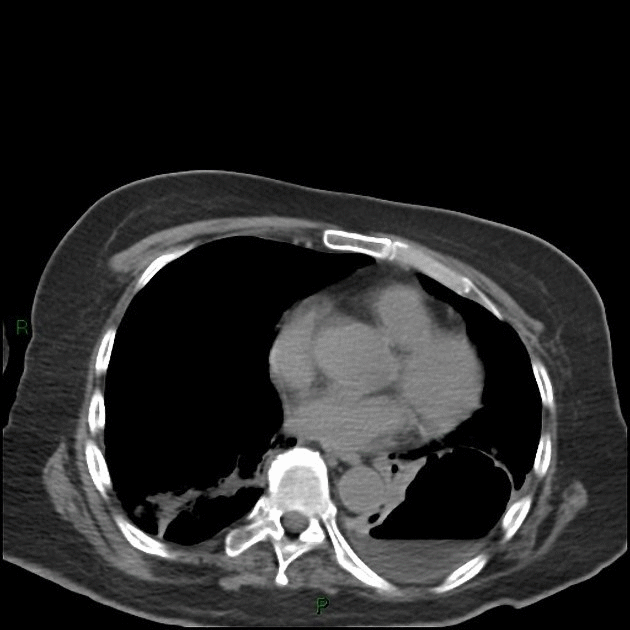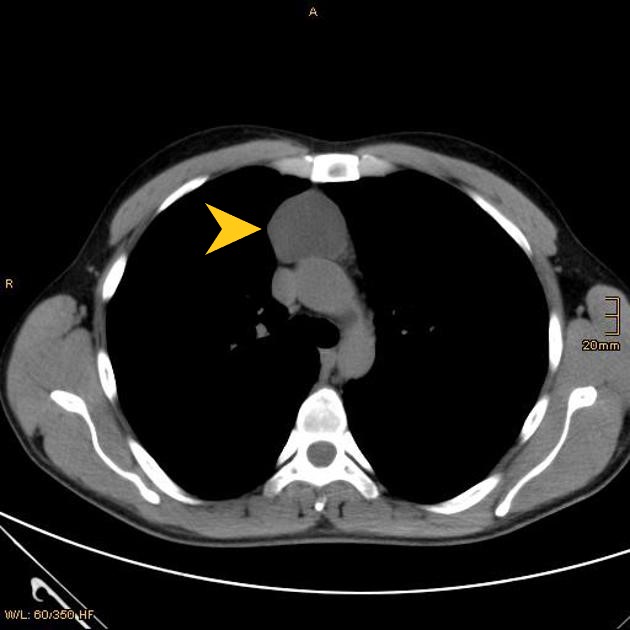Bronchogenic cyst differential diagnosis
|
Bronchogenic cyst Microchapters |
|
Diagnosis |
|---|
|
Treatment |
|
Case Studies |
|
Bronchogenic cyst differential diagnosis On the Web |
|
American Roentgen Ray Society Images of Bronchogenic cyst differential diagnosis |
|
Risk calculators and risk factors for Bronchogenic cyst differential diagnosis |
Editor-In-Chief: C. Michael Gibson, M.S., M.D. [1]; Associate Editor(s)-in-Chief: Joanna Ekabua, M.D. [2]
Overview
Bronchogenic cyst must be differentiated from lung abcess, thymic cyst, and esophageal duplication cysts
Differentiating Bronchogenic cyst from other Diseases
Differentiating bronchogenic cyst from lung abcess, thymic cyst, and esophageal duplication cysts
| Diseases | Clinical manifestations | Para-clinical findings | Gold standard | |||||||||||
|---|---|---|---|---|---|---|---|---|---|---|---|---|---|---|
| Symptoms | Physical examination | |||||||||||||
| Lab Findings | Imaging | Histopathology | ||||||||||||
| Symptom 1 | Symptom 2 | Symptom 3 | Physical exam 1 | Physical exam 2 | Physical exam 3 | Lab 1 | Lab 2 | Lab 3 | Imaging 1 | Imaging 2 | Imaging 3 | |||
| Lung abcess[1] | Fever | Chest pain | night sweats | Dullness to percussion | coarse inspiratory crackles | Decreased breath sounds | Leukocytosis | Increased inflamatory markers (ESR, CRP) | Anemia of chronic disease |  |
 |
 |
 |
CT with intravenous contrast |
| Thymic cyst[2] | Cough | Chest pain | Dyspnea | Some patients may present with a soft compressible neck mass | - | - | - | - | - |  |
 |
 |
 |
Biopsy withhistopathology and cytology |
| Esophageal duplication cysts[2][3][2] | Retrosternal and thoracic back pain | Epigastric discomfort | Dysphagia | - | - | - | - | - | - |  |
 |
 |
 |
Endoscopic ultrasound
|
References
- ↑ Kuhajda I, Zarogoulidis K, Tsirgogianni K, Tsavlis D, Kioumis I, Kosmidis C; et al. (2015). "Lung abscess-etiology, diagnostic and treatment options". Ann Transl Med. 3 (13): 183. doi:10.3978/j.issn.2305-5839.2015.07.08. PMC 4543327. PMID 26366400.
- ↑ 2.0 2.1 2.2 Juanpere S, Cañete N, Ortuño P, Martínez S, Sanchez G, Bernado L (2013). "A diagnostic approach to the mediastinal masses". Insights Imaging. 4 (1): 29–52. doi:10.1007/s13244-012-0201-0. PMC 3579993. PMID 23225215.
- ↑ Liu R, Adler DG (2014). "Duplication cysts: Diagnosis, management, and the role of endoscopic ultrasound". Endosc Ultrasound. 3 (3): 152–60. doi:10.4103/2303-9027.138783. PMC 4145475. PMID 25184121.